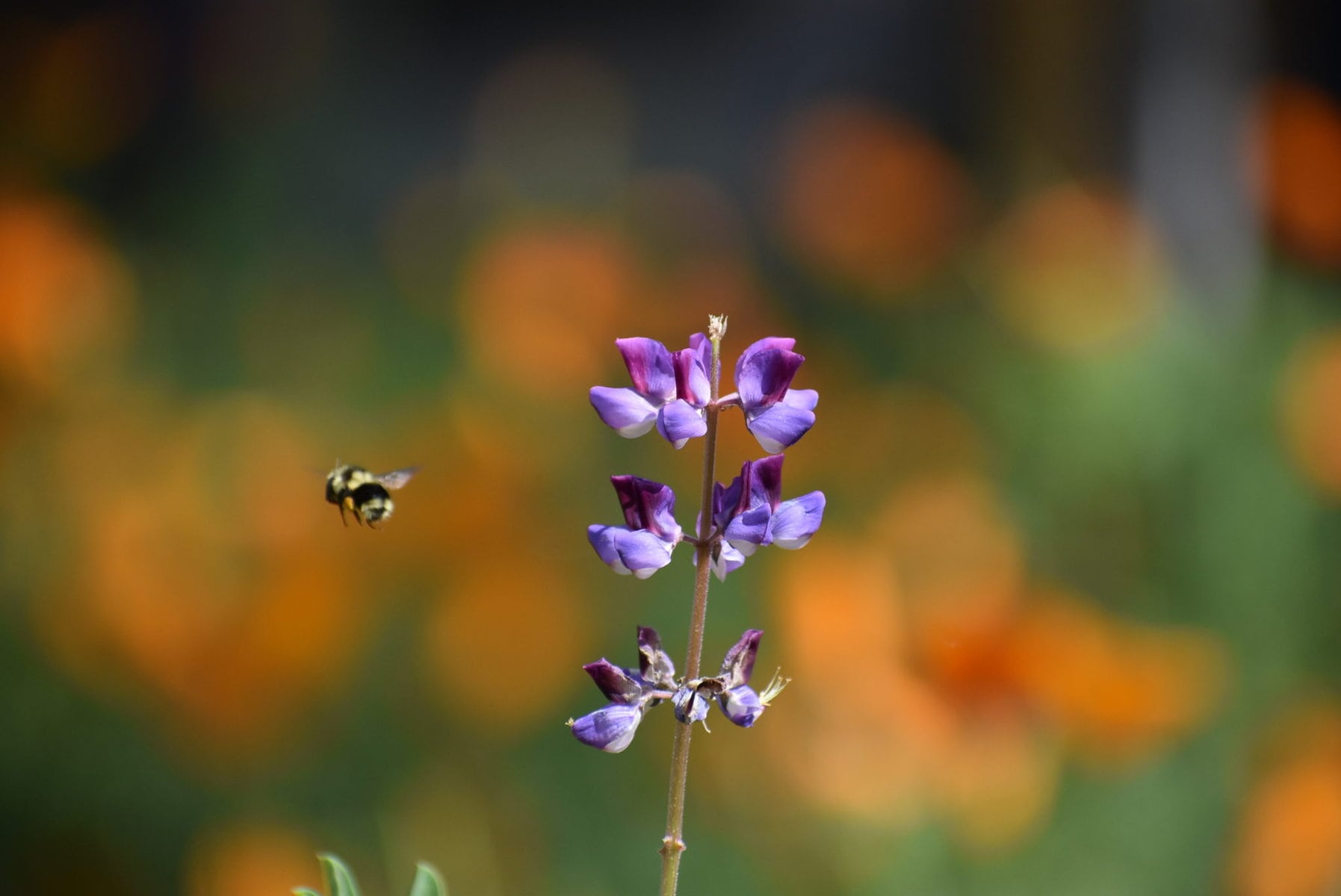While your first inclination may be to run to the supplemental water, just remember, that our goal is to create gardens that thrive in the natural environment and that if our garden can’t stand the heat, we might want to reconsider some of our plant choices and placement, our mulching practices and how the water we do have is being distributed over our space. Checking your soil with a soil moisture meter can help in the process of understanding how your soil is retaining water. Remember, even if your soil is dry this time of year, plants in the California Chaparral, Sage Scrub and Desert communities have adapted to thrive with a longer period of summer drought.

That being said, young plants, container plants and riparian plants that commonly grow by streams will likely need some supplemental water during this time. Watering by hand in the cool of the early morning and evening sprinkles can ensure that you are not wasting water and that the sun isn’t getting to it before the soil can absorb the moisture. You can also place your hose by plants with deep roots and let it trickle for a longer period to allow for deep and less frequent watering.
Late September and early October, before the first rain, can also be a time for reflection in the garden. A time to think about what worked, what didn’t and what changes you might like to make the next year. It can be a time to enjoy watching the birds, butterflies and bees that have found a home in your space, even in the driest time of year.

Depending on how you pruned through the rest of the year, you can consider light pruning of your chaparral plants now with most pruning continuing through the month of October. Sterilize your tools as you move between plants to stop pathogens from spreading. You can take cuttings of your evergreen shrubs like California Lilac (Ceanothus) and begin the process of propagation.
If you still have unwanted grasses and weeds, pull them out now as they are going to seed. If you wait any longer, you may have the same problem next year. Also examine the amount of grass and weeds you have. If they are abundant, it could be an indication of too much watering. This was a dry year and the weeds should be minimal.
Pulling back some of the mulch can help with weeding and also exposes your top-soil so it is ready for seeding and germination. Be careful only to make necessary disturbances to your soil as you want to nurture the network of mycorrhizal fungi that can help distribute nutrients around your garden. This fungi lives in your soil and yes, even in your mulch, so only move what is necessary for germination if you are seeding. If you are planting, dig a hole where you want to place your plant it and drop it in, don’t disturb the surrounding area. With California Natives you shouldn’t need to provide additional soil, as rich garden soil isn’t what makes native plants thrive, that being said, soil that has lost its structure to chemical fertilizers, is heavily compacted, graded and depleted may need some care to create beneficial conditions for growth.
Your annual wildflower mixes and cool season grasses should be ready to spread, just make sure to seed right before or during the first rain in order to get the most from your seeds. After you spread your seeds, add a bit of top-dressing to help with germination.
Take a trip to your local Native plant nursery (check out Hahamongna Nursery in Pasadena, Theodore Payne near Los Angeles, or Tree of Life Nursery in Orange County) and purchase the plants you want to plant this season. Take a look at your garden and see what plants have been working for you. Calscape is a great online resource where you can view information about the plants that are thriving in your garden and search for plants with similar water, light and soil requirements. They will even tell you the nurseries that carry the plants that appear in your search results.
While at first glance, late summer in the garden may be a worrying time, remember that your garden is not a static form, but an ever changing, ever evolving, ever growing community and that the harshest periods of drought can teach us and help us learn how to care for a garden with what nature provides. This time can help us learn how to love and find beauty in the things that our society has not deemed aesthetically appropriate. If we listen to our garden and respond appropriately, it will return the love that we put into it.

If you need help maintaining your garden or would like a consultation to help with garden care or plant selection, reach out to our friends at Saturate.
For additional resources about summer gardening in Southern California read September in The Natural Garden by Tree of Life Nursery and California Native Gardening, A Month-By-Month Guide by Helen Popper.


